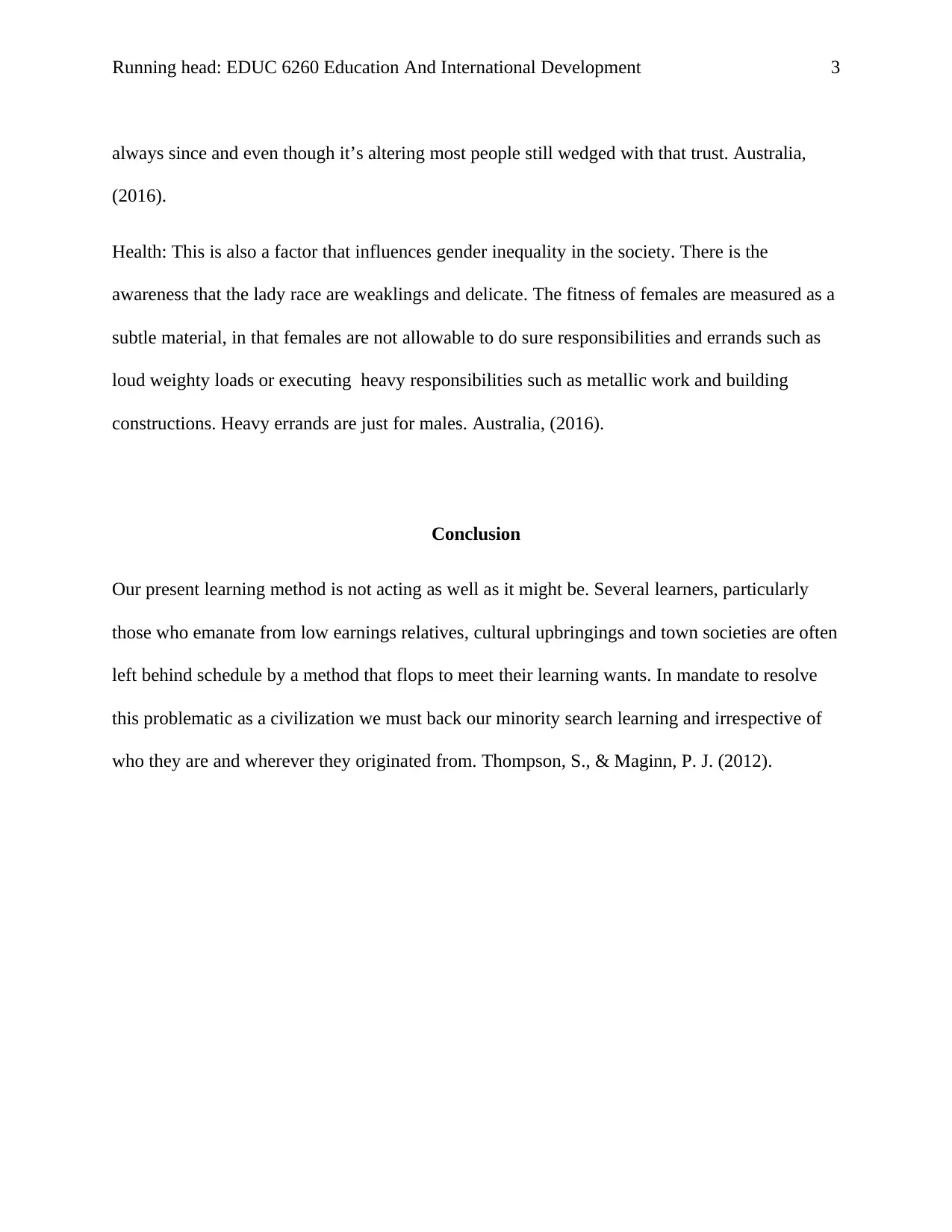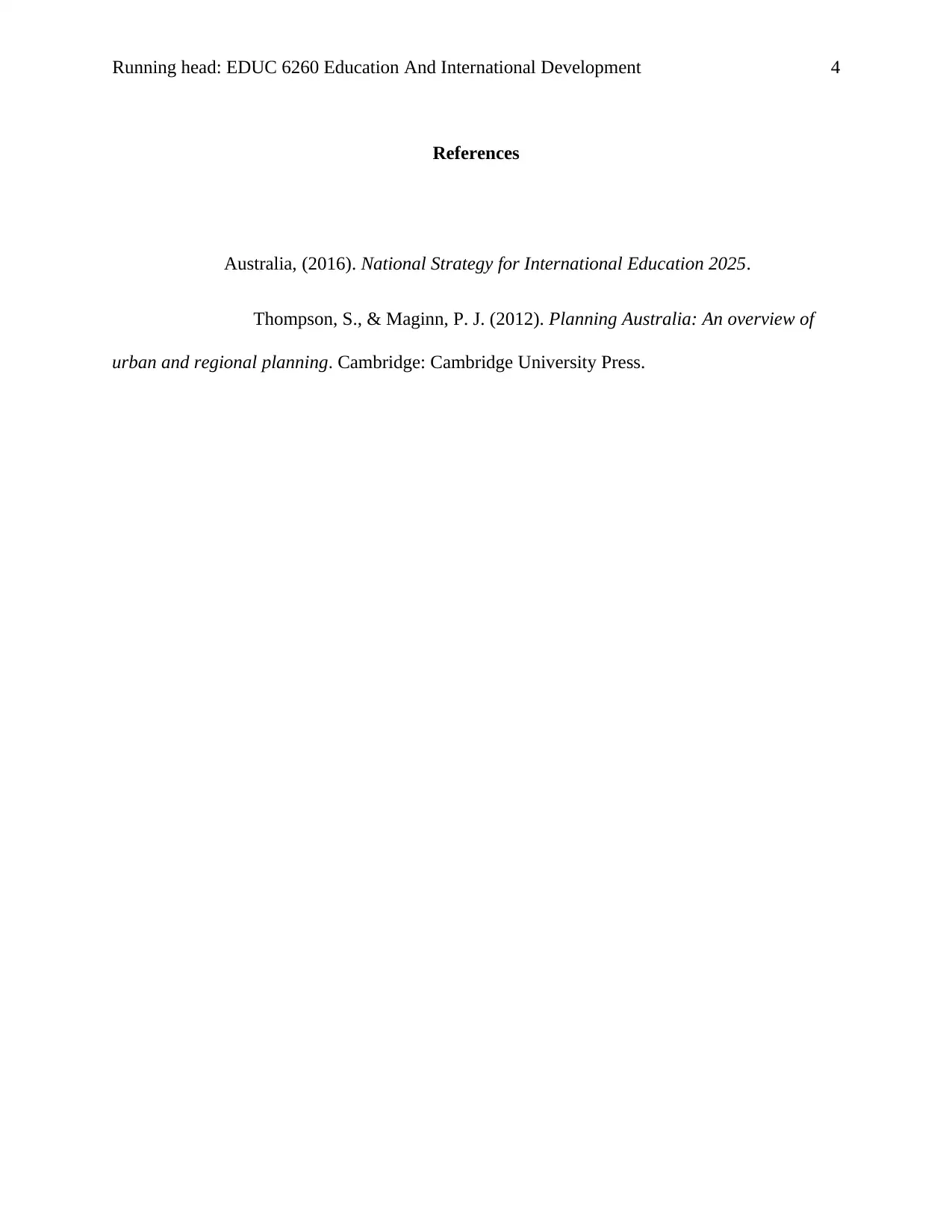Gender Inequality in Education: EDUC 6260 Report on Key Factors
VerifiedAdded on 2023/04/20
|4
|552
|114
Report
AI Summary
This report, prepared for EDUC 6260, examines the multifaceted issue of gender inequality in education. It delves into key factors such as poverty, cultural traditions, and health disparities, and how these elements contribute to unequal access and opportunities for both genders, particularly in the context of higher education. The report highlights that poverty significantly impacts access to education, with cultural norms often prioritizing boys' education over girls'. Additionally, the report addresses how societal perceptions of women's health and roles further exacerbate inequalities. The conclusion emphasizes the need for inclusive educational approaches to support all learners, regardless of their background or circumstances. References are provided to support the arguments and findings discussed throughout the report. The paper highlights the need for change and improvement in the current educational system to provide equal opportunities for all students.
1 out of 4





![[object Object]](/_next/static/media/star-bottom.7253800d.svg)